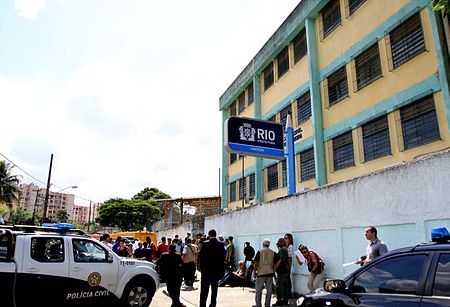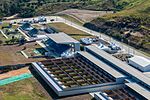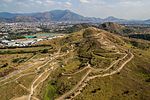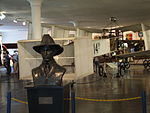The Military School of Realengo (Portuguese: Escola Militar do Realengo) was the training institution for officers of the Brazilian Army from 1913 until its transfer to Resende in 1944, originating what is now the Military Academy of Agulhas Negras (AMAN). There began the formation of the military elite, an important part of the Army reforms and the consolidation of the Brazilian republican State in its time. In three to five years its students, called cadets after 1931, became officer candidates and were assigned to troop corps. The formation was, since 1919, for platoon leaders; higher up in the military hierarchy, officers would pursue instruction at the Officers' Improvement School and other institutions. The Artillery and Engineering branches courses were already operating in the Realengo neighborhood in Rio de Janeiro, since 1905, after the extinction of the Military School of Praia Vermelha (EMPV); the two other courses, Infantry and Cavalry, were centralized in those facilities in 1913. Aviation Cadets had only just begun their Realengo training, concluding it at the Military Aviation School, in Campo dos Afonsos.
Its predecessor, the EMPV, had a civilian and scientific curriculum, forming politically engaged “bachelor graduates in uniform”. Neither they nor the “tarimbeiros”, the most practical officers trained in the troop, had a modern military background. The Brazilian Army's reforms at the beginning of the 20th century sought to make teaching practical, of a technical-professional nature, and train officers who were disciplined and faithful to the hierarchy; thus, training was transferred to Realengo, a suburban neighborhood, farther from the political turmoil of the federal capital and with space for military training in the field. Students continued to come largely from the urban middle class.
The new curriculum had no theoretical teaching, only practical or theoretical-practical. However, there was a lack of resources in the first years of operation, which began to change in 1918, with the hiring of the “Indigenous Mission”, a body of instructors influenced by the military reformism of the Young Turks. The students were placed in military subunits in a Student Corps, and the four branches (Infantry, Cavalry, Artillery and Engineering) had the course time equaled in three years. The students with the highest grades chose Artillery and Engineering, of a more technical nature. In 1919–1920 the building was expanded to its present size with three courtyards, but the facilities were austere. The physical labors were intense, and the discipline was rigid. Cordeiro de Farias defined this generation as the first Brazilian Army officers to receive a truly military training. Even so, students and instructors revolted in 1922, in the first episode of tenentism. The class at the end of 1919 became the core of the lieutenants' revolts, because, contrary to what the Army authorities intended, the students' environment was politicized and the insubordinate tradition of Praia Vermelha was not extinguished. Reformed teaching created a strong military identity, which considered itself superior to civilian politicians.
After 1922, the Indigenous Mission came to an end, and the French Military Mission took its place. Practical teaching was balanced with theory in the curriculum. Students were enthusiastic about the 1930 Revolution, after which command was assumed in 1931–1934 by colonel José Pessoa. He had ambitions to make the cadets a moral aristocracy. Under his command, the number of civilian applicants increased, cadet life, which had been a full-time boarding school since 1930, was regulated to the level of a total institution, while discipline was relaxed, physical reforms made the School more comfortable, symbols and rituals (historical uniforms, coat of arms, small swords and banners) that still exist today emerged and the transfer of the School to Resende was idealized. During the Communist Uprising of 1935, the School went on a campaign for the first time, supporting the constituted authorities. After 1938, the Estado Novo applied a discriminatory policy in the selection of candidates, seeking to form a homogeneous institutional elite. At the beginning of the 1940s, Realengo cadets achieved a prestige in society that did not exist at AMAN decades later. The officers trained in 1913–1944, the “Realengo generation”, had a sense of identity with the Army and its ranks, and many would have long careers of political involvement and holding public office. The generals responsible for the 1964 Brazilian coup d'état trained there in the late 1910s and 1920s, and the presidents of the Brazilian military dictatorship (1964–1985) were alumni.








